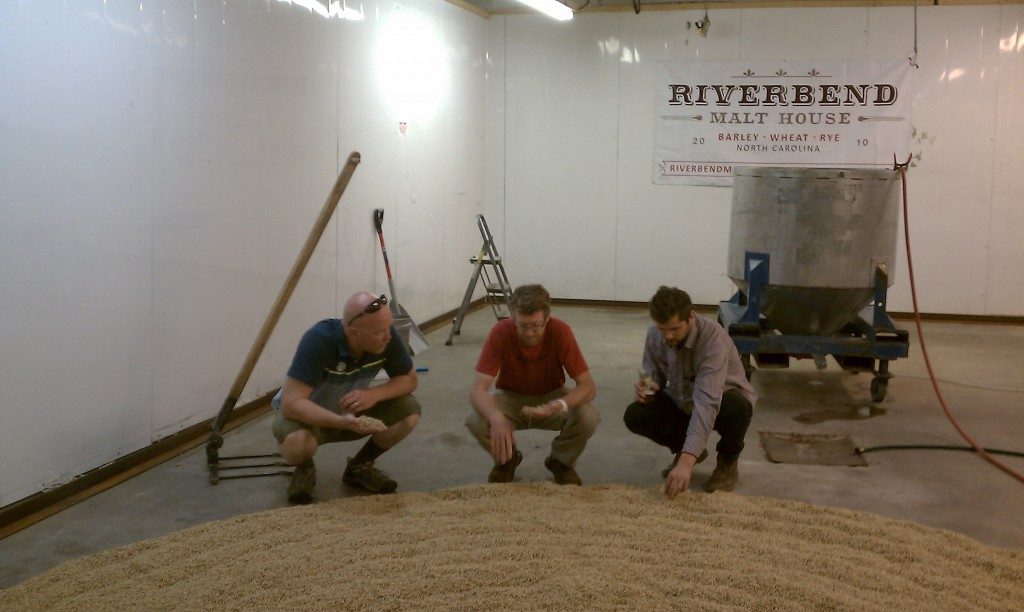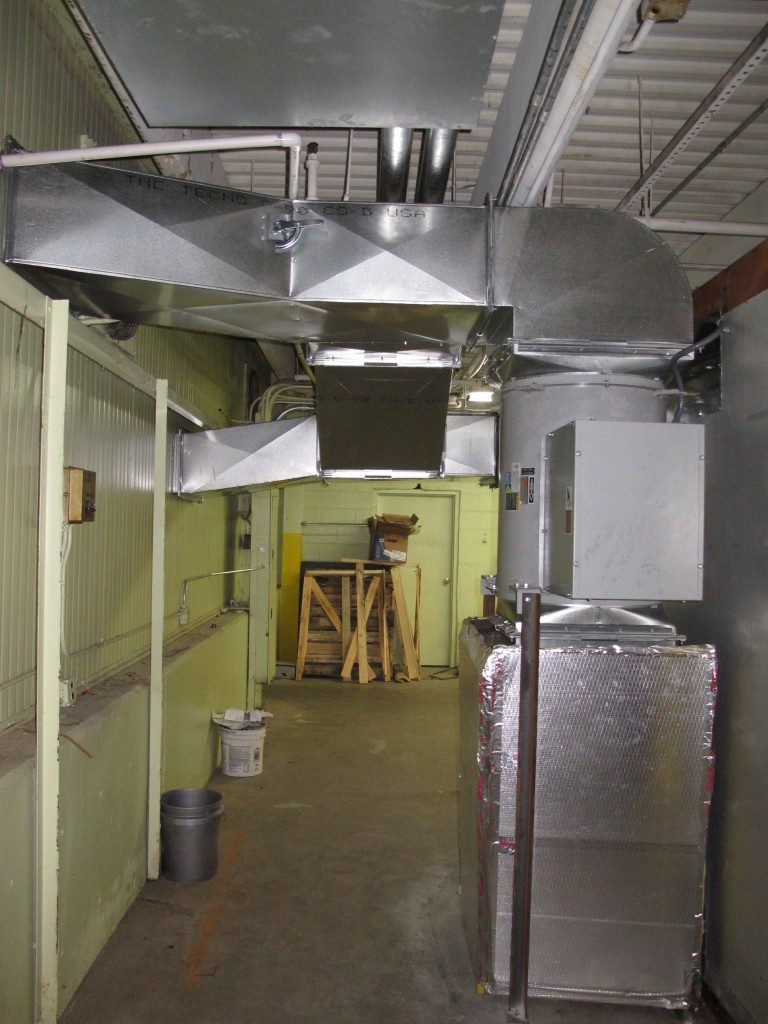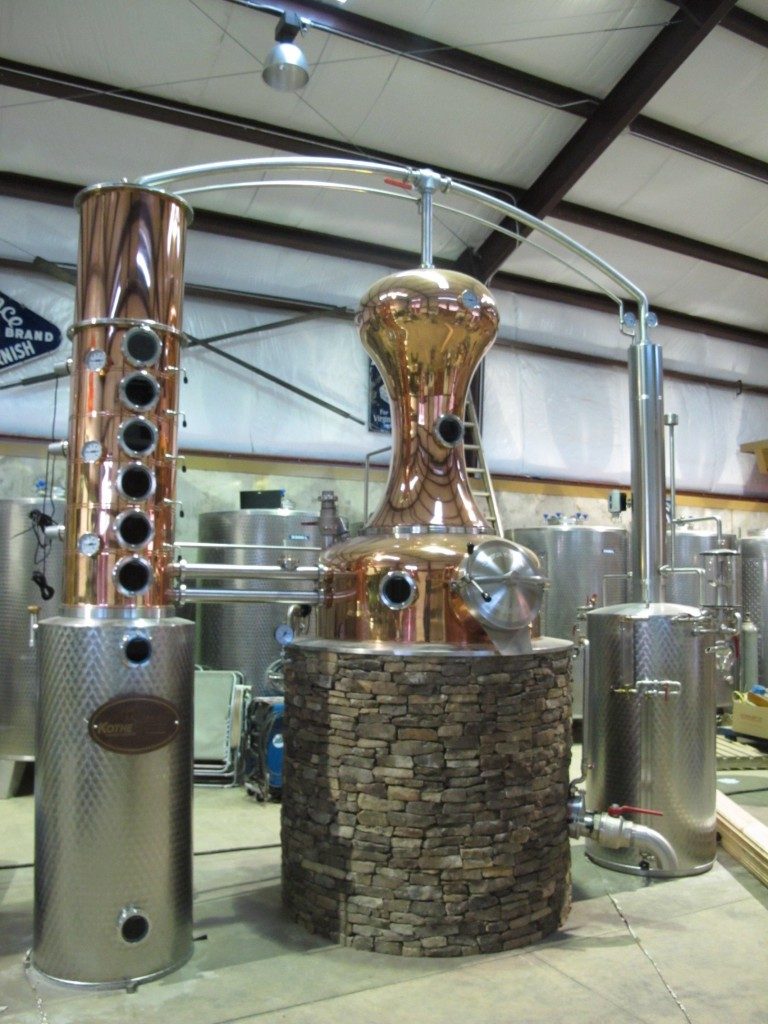So this is pretty special…a few weeks before AVL Beer Week we got an email from Matt at New Belgium requesting a tour of our humble establishment during their stay. Naturally, we obliged. On paper, our two businesses are a great fit…both committed to sustainability and maintaining a high quality of life for their employees. We just weren’t expecting our meet and greet to occur so soon after their big announcement.
It worked out beautifully. We hit it off immediately with Matt, Grady, and Drew over a few beers and locally sourced malt balls from French Broad Chocolate Lounge. We took them through the tour, highlighting our swanky new kiln controls and old-school malt rake. I’m not sure what they were expecting, but they seemed genuinely impressed with our process and finished products.

Brian discusses germination with the guys from NBB
During the tour we happened to mention that the kiln needed to be loaded sooner than later as the malt had completed the germination phase of the process. They offered to lend a hand, and we took them up on the offer! We dusted off the wheelbarrows and went to work shoveling green malt off of the floor. Too fun!
After the tour, we spent some time talking shop….when will Le Terroir come back? Is Clips of Faith returning to AVL (yes, September 7th!)? All in all a great morning of beers and conversation with some great down-to-earth guys. I’m sure you’re wondering…will Riverbend Malt make its way into a New Belgium brew? Stay tuned, we’ll let you know!





